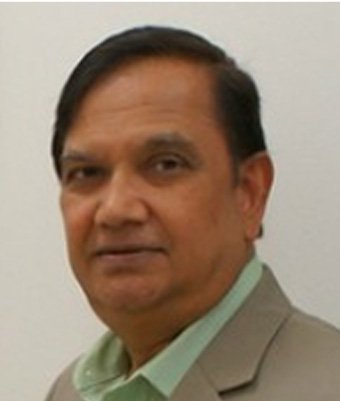Medically Reviewed by Dr. Mohammed Saeed, MD.
Vicodin is one of the most abused drugs in the world. It is a combination of the opiate painkiller hydrocodone mixed with the over-the-counter painkiller acetaminophen (better known as Tylenol). Vicodin is a prescription drug typically used for short-term pain management. Hydrocodone is very strong and highly addictive, while acetaminophen is much milder. Vicodin is considered a narcotic.
Because Vicodin is a prescription drug, many people consider it “safe,” and are unaware of the dangers it poses. Sadly, many people get addicted to Vicodin by accident. Addiction can begin with a valid medical need for a strong painkiller after a painful injury or other medical condition. A doctor may issue a valid prescription, but if the patient takes more than recommended a tolerance builds. They need to take more to keep the pain away. Tolerance can easily develop into dependence, and then addiction. In fact, signs of physical dependence can develop within a week of taking Vicodin regularly. Vicodin should only be used under medical supervision, and it is critical to never exceed the prescribed dose and frequency.
Other people use it for an opiate high right from the start. Vicodin can be snorted, injected, or taken orally.
Vicodin decreases pain and creates feelings of euphoria, calm, and relaxation. It causes a dopamine rush in the brain that eliminates pain while producing a euphoric high. The acetaminophen in Vicodin enhances the effect of the hydrocodone, making Vicodin highly addictive.
Vicodin pills normally contain anywhere from 5 to 10 milligrams of hydrocodone and 325 to 660 milligrams of acetaminophen. Hydrocodone is the addictive component, and high doses of acetaminophen can cause liver damage. Taking a larger than recommended dose of Vicodin is risking both addiction to hydrocodone and liver failure from the acetaminophen.
Signs and Symptoms Of Vicodin Abuse
The signs and symptoms of Vicodin use or abuse are the same as those produced by other opiates.
Physical symptoms of Vicodin abuse include drowsiness, slowed heartbeat, slowed breathing rate, dizziness, headache, blurred vision, constricted pupils, or nausea.
Psychological/behavioral symptoms include fear, impaired judgment, paranoia, anxiety, difficulty concentrating, irritability, memory problems, cravings for Vicodin, using Vicodin for non-medical reasons (the high, or just to feel normal), and mood swings.
Other signs include relationship issues, financial problems (Vicodin costs money), criminal activities (pharmacy robbery, stealing from family or work), loss of interest in hobbies and pastimes, neglect of work or school, “doctor shopping” (using multiple doctors to get multiple prescriptions), hiding Vicodin use, and legal troubles.
Dangers of Vicodin Abuse
Long-term Vicodin abuse can lead to liver failure, jaundice, and urinary tract issues. Many Vicodin abusers drink alcohol along with Vicodin for a greater effect, a combination especially damaging to the liver. Both are central nervous system depressants, and this combo can also lead to dangerous or fatal respiratory depression.
Overdose symptoms include clammy skin, nausea/vomiting, pinpoint pupils, low blood pressure, weak pulse, slowed or difficult breathing, respiratory arrest, cyanosis (blue lips and fingernails), coma, seizures, or death.
Vicodin Detox and Addiction Treatment
Breaking an addiction to Vicodin, or any opiate is a multi-step process. Treatment can be done on an outpatient or inpatient basis depending on the individual’s needs and the severity of the addiction. A full recovery program should include both medical treatment and behavioral therapy to address the physical drug dependence and the emotional or psychological causes underlying the addiction.
Physical detoxification is the first step. Stopping Vicodin leads to painful withdrawal symptoms. Many find the withdrawals too much to handle alone — so a medically monitored inpatient detox is the best and safest bet. Vicodin withdrawal symptoms include nausea, diarrhea, vomiting, sweating, watery eyes, runny nose, muscle pain, sleep disruptions, and depression. Symptoms begin within 6 to 24 hours of the last dose and may last a few weeks.
Once the body is clean, the person in recovery must address the issues that caused the addiction in the first place and develop coping strategies to prevent relapsing. They need to re-learn life skills and find inner strength in order to live a sober life. Many people in recovery will benefit from aftercare programs that incorporate continued therapy support groups. They can regain control of their life and exist without drugs.
Why Choose Into Action Recovery Centers?
Into Action Recovery Centers takes pride in providing a high level of treatment and a holistic approach to recovery for those who suffer from addiction. Our comfortable facility is designed with the client’s needs foremost in mind. Our staff includes master’s level counselors, licensed chemical dependency counselors, 24-hour nursing professionals, a staff psychiatrist, a staff chef, and direct care personnel. Our counseling staff provides individualized treatment and care for our clients with an emphasis on tailoring treatment to the specific needs of each individual. Additionally, our staff provides family counseling, relapse prevention, life skills, and grief and trauma counseling.
Into Action Recovery Centers provides an abstinence-based program and all of our staff members have a strong understanding of the recovery process through personal experience. We are passionate about sharing the process involved in living a drug and alcohol-free life. We offer free aftercare for the men who complete our program and have a strong alumni network that remains active in the community. We also offer other amenities such as dietician-prepared meals, mindfulness-based meditation training, outings, and fitness training.




